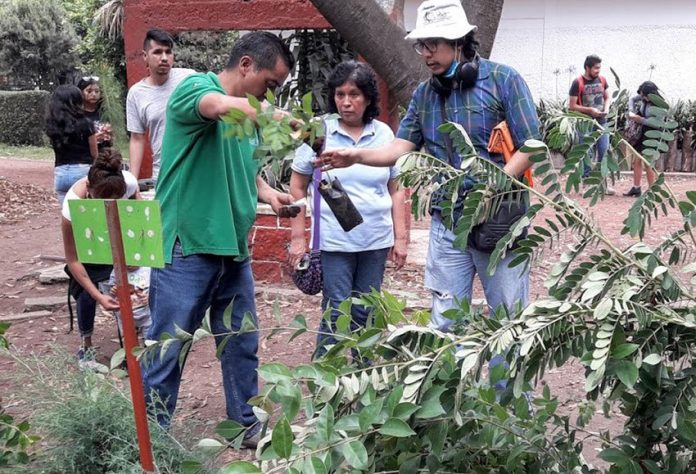Last week in Mexico City, the Environment Secretariat gave away free trees to residents to plant in their communities.
The tree giveaway took place in Viveros de Coyoacán and a Facebook post announcing the event quickly gained 26,000 reactions. Residents came from all 16 boroughs of Mexico City to claim their trees.
On Monday, each person was allowed to take five trees. By Wednesday, that number had shrunk to three. By Friday, it was down to one tree per family and some waited in line for as long as an hour to receive just one tree. The program is now suspended until July.
The timing of the tree giveaway coincided with an environmental contingency. In the dry months before the rainy season begins, pollution builds within the Valley of México and this year the early weeks of May saw air contamination reach record-breaking levels.
Pollution, including ozone and particulates, gave the air a brown haze that could be seen throughout the city, closing schools on May 17 and prompting many companies to give their employees the day off. The city government activated emergency rules that banned many vehicles from the roads.

The best action individuals can take to help clean their air is simple — plant a tree. In addition to providing oxygen and removing carbon dioxide, trees clean the air of many pollutants. Ozone, nitrogen oxides, ammonia and sulfur dioxide are all absorbed by trees. They also filter particulates out of the air, trapping them on their leaves and bark.
Los Viveros, which produces one million seedlings a year, has been donating trees to CDMX residents since as early as 1907. The trees can be planted in private or public spaces as long as they will receive sufficient light and have the necessary space to grow. A city biologist conducted brief interviews with each resident to determine which species of tree they could take home and to advise them on the best place to plant it.
They also reminded the recipients that to plant in a public park or in the middle of the camellón (the walkways in the middle of Mexico City avenues), they must first request permission from their borough. No such permission is required to plant on the sidewalk, although spaces must be chosen carefully as the young trees are vulnerable.
As global temperatures continue to rise, trees have taken center stage in the battle against urban heat waves. The air temperature of cities can be 1.8 to 5.4 F warmer than surrounding rural areas. At night, the difference is even more profound, with cities retaining up to 22 degrees more than rural areas, which quickly lose their heat as the sun goes down.
The right amount of tree coverage in cities can lower temperatures in the summer by up to 10 F. By providing shade and releasing water vapor, a tree does more for overheated residents than any other personal cooling system. A detached house with trees placed around it can expect to save 20% to 30% on their air conditioning costs.
Residents were encouraged to wait for the rainy season to plant their trees, giving them the best chance of survival. Now that the seasonal storms have returned to the valley, the trees can go into the ground. While their cooling, cleaning and oxygen-producing effects will be far more pronounced once they grow to maturity, people today can give a gift to future generations simply by planting a tree on the sidewalk.
For the overwhelming number of people who came to Los Viveros, they hope that their legacy will be one of green streets, and not of brown sunsets.
The writer lives and works in Mexico City.
